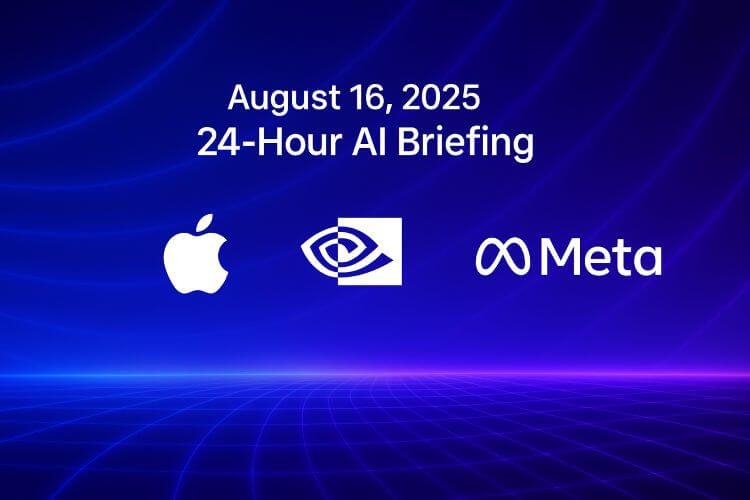AI Navigation
- articleAI Trends
- lightbulb_2AI Tips
- assistant_navigationAI Navigation
- heatHot Articles
- emergency_heat_2Hot Tips
- format_list_numberedPrompt Formatter
- psychologyTest Center(RPI)
August 16, 2025 · 24-Hour AI Briefing: NVIDIA Bets Heavily on CoreWeave, Meta Releases DINOv3, iPhone 17 Pro Max Configuration Revealed
As the AI industry enters a new phase of deep competition, leading players are accelerating their positioning — from NVIDIA’s heavy investment in infrastructure to Meta’s new self-supervised vision model, and even Apple’s early hardware preparations. Over the past 24 hours, a series of strong signals have once again emerged across the AI landscape.

1 NVIDIA Q2 Holdings Revealed: Over 90% Allocation on CoreWeave
According to NVIDIA’s latest 13F filing, as of June 30 the company allocated 91.36% of its public equity holdings to AI cloud service provider CoreWeave, representing a total investment of $3.96 billion. In addition to CoreWeave, NVIDIA also held stakes in Applied Digital, Arm, Nebius and AI healthcare company Recursion Pharmaceuticals. CoreWeave’s stock has also performed impressively, surging from its IPO and briefly approaching $200 before experiencing a small pullback.
Comment:
CoreWeave is the first large-scale provider to offer the full Blackwell GPU product line and has built data centers specifically for AI workloads, serving notable customers such as Cohere, IBM and Mistral AI. NVIDIA’s heavy position highlights its strong confidence in the AI infrastructure sector. However, in its latest quarterly report, despite CoreWeave’s revenue reaching $210 million (above the market expectation of $108 million), it posted a net loss of $267 million — wider than the expected $241 million — indicating that profitability remains a near-term challenge.
2 Meta Trains 7-Billion-Parameter DINOv3 Model with Self-Supervised Learning
Meta announced a new self-supervised vision model, DINOv3, which generates high-resolution image representations and delivers state-of-the-art results in dense prediction tasks. The model can be directly deployed across a variety of vision workloads without fine-tuning. In addition, according to people familiar with the matter, Meta is planning its fourth restructuring of its AI organization, and is expected to split it into four separate divisions over the next six months.
Comment:
Self-supervised learning avoids manually labeled data and has become the dominant paradigm in modern machine learning, although progress in the vision domain has been comparatively slower. DINOv3 introduces a more efficient approach that requires far less computational cost and enables the model to generalize across broader application scenarios without downstream fine-tuning. It represents a practical leap over traditional weak-supervision methods.
3 iPhone 17 Pro Max Configuration Revealed: Aluminum Frame, 5000mAh Battery and A19 Pro Chip
Industry insiders report that Apple’s upcoming iPhone 17 Pro Max will feature a new aluminum middle frame (replacing the titanium currently used), and be equipped with a battery exceeding 5000mAh — the largest ever in an iPhone. The device will reportedly use the 3nm A19 Pro chip, include 12GB of RAM and support Wi-Fi 7. Apple is also expected to upgrade its vapor-chamber cooling system and redesign portions of the motherboard and MagSafe assembly to improve thermal performance and hardware extensibility.
Comment:
Since the iPhone 7, Apple has not used a metal back panel on its flagship devices. This material shift may influence a new wave of hardware design trends. At the same time, the substantial increase in battery capacity and improved cooling structure suggests that Apple may be laying the hardware groundwork for on-device AI inference. That said, the above information remains unconfirmed and will need to be verified by official announcements.
For more AI insights, business observations and technology trends, visit https://iaiseek.com
If you want a recap of the key events from the past 72 hours in the AI sector, take a look at:
👉 Cohere funding, JD Health’s AI healthcare progress, Intel increases manufacturing investment, etc.
👉 Tencent earnings shine, Apple prepares new AI devices, Cathie Wood increases stake in PONY.AI